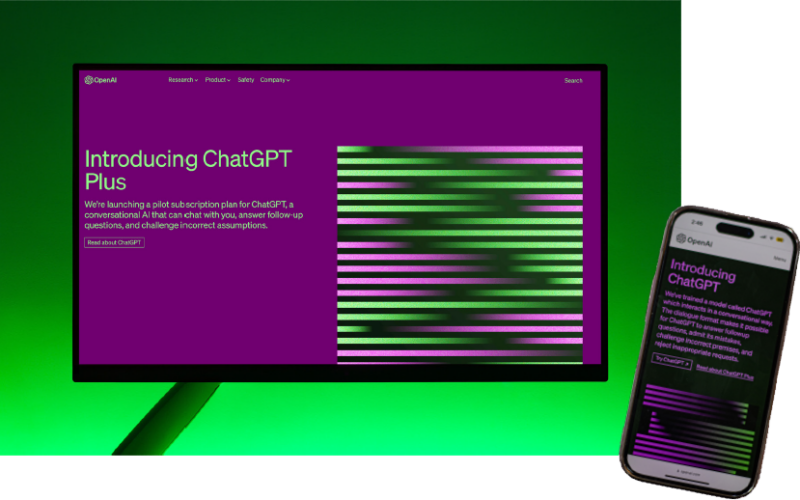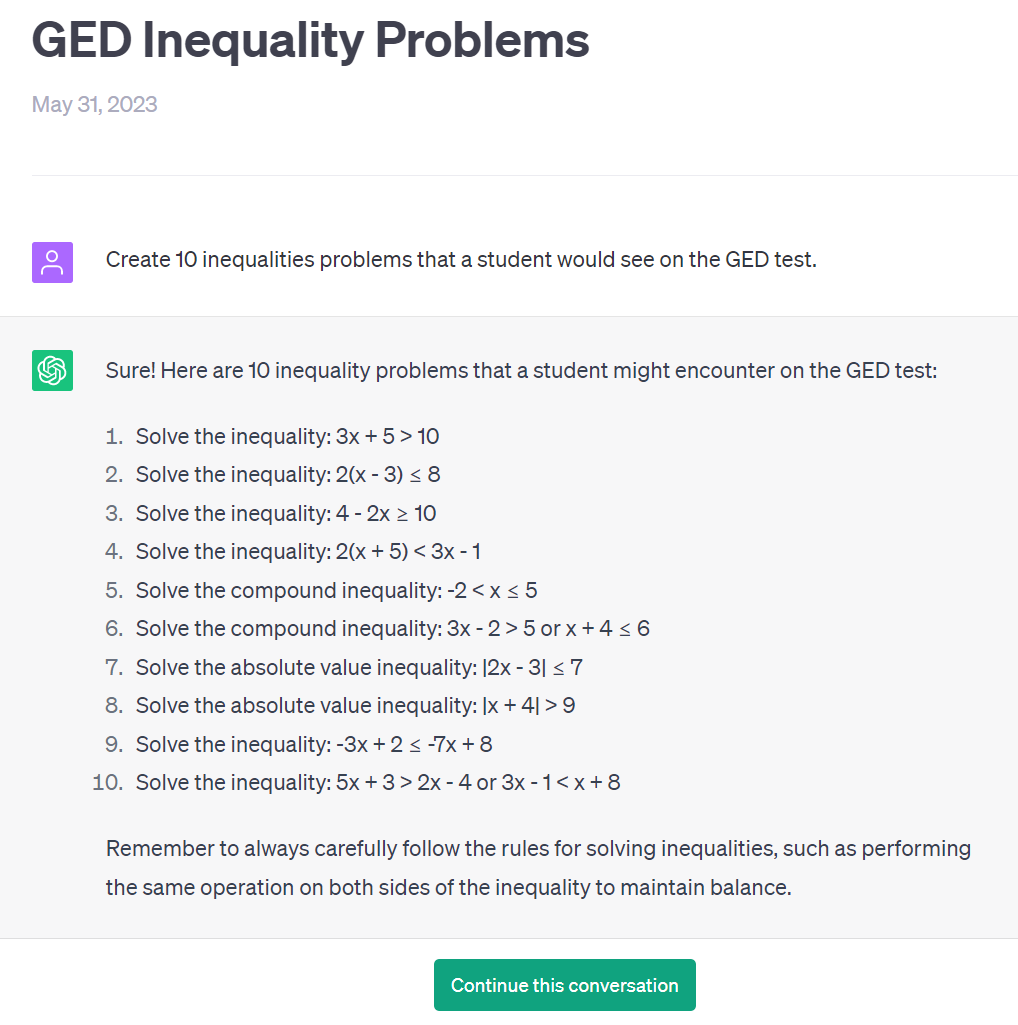ChatGPT + GED®/Adult Ed: How Do They Work Together?

by Brandie Millar
ChatGPT is one of several Artificial Intelligence (AI) chatbots that use a prompt given by a user to provide a detailed response. Microsoft and Google also have AI chatbots that allow for similar use, however, ChatGPT is free and easy to start and use.
I am a novice ChatGPT user, however, in just a few short days of using the tool, I was able to incorporate it into my lessons as a GED® instructor. I learned about ChatGPT by watching a short video online shared by a friend. As a teacher, I was immediately intrigued by how this new tool could help me in my classroom. I am always looking for ways to broaden my instructional approach to be able to reach more students in a more effective and efficient manner. ChatGPT is a tool that I added to my toolbox to do just that.
ChatGPT, like any AI, cannot be used as a one-stop-shop for anything, especially instruction. However, it can help provide instructors with new and fresh ways to interact with learners and the curriculum. With ChatGPT, it all starts with the prompt. To get the response that you are looking for, your prompt should be specific and concise. As the user of ChatGPT, you enter a prompt, and then you receive a response based on that prompt.
For example, assume you want to provide your class with a warmup centered on inequalities but you don’t have any unused materials or questions that the students have not seen. You can simply enter a prompt such as “Create 10 inequalities problems that a student would see on the GED® test.” Assume your results come back and OOPS! You forgot to mention that you want the answers—we are trying to save time as educators! You can then enter a second prompt that says “Include answers” and ChatGPT will generate the questions again, this time with answers provided.

Now, let’s assume you actually wanted those 10 questions presented as word problems. You would then enter a third prompt saying something like “Now make them word problems with answers.” There are no set ways that a prompt must be presented. However, to get the results you are looking for, your prompts should be as specific as possible.
Let’s look at a reading example. You have had your students read texts and answer questions but you are trying to think of a different way for them to analyze what they are reading. A sample prompt could be “Write a 300 essay with 10 grammatical errors” or “Write a 5-paragraph essay with 10 words missing to allow for students to complete a cloze activity. Make the subject area science specific. Include a word bank.” This would allow students to find errors in a text and fill in the blank with the correct word from a bank of words—two fantastic ways to analyze a text.
Finally, let’s put the learners in the driver’s seat. Since ChatGPT is free, instructors can show students how it could be used as a GED® study tool. Students could design prompts (an excellent skill!) and use the responses to help prepare for the GED® test. This allows students to take ownership of their learning while learning a valuable skill that they could use in the workplace. Remember, this tool is just an addition to the many tools and strategies used by teachers and students to prepare for the GED® test. While not robust enough to cover the entirety of the curriculum needed, ChatGPT provides many novel uses and benefits.
Additional ChatGPT/AI Resources
ChatGPT: Leveraging AI to Support Personalized Teaching and Learning, Leveraging Technology to Promote Adult Learning
Artificial Intelligence and the Future of Teaching and Learning: Insights and Recommendations (May 2023)
World Education: EdTech Bytes Generative Artificial Intelligence webinar series
EdTech Center@World Education: Foundations for AI in Adult Ed
Education Week: How Teachers Are Using Artificial Intelligence in Classes Today
MERC Research Brief: Balancing the Benefits and Risks of AI Large Language Models in K12 Public Schools
USDOE Office of Educational Technology: Artificial Intelligence
Stanford University HAI: AI Will Transform Teaching and Learning. Let’s Get it Right.
 Brandie Millar is an adult education instructor at Laurel Ridge Community College. She has been an educator for 17 years, teaching K–12 special education for 12 years and then working with adult education for the past 5 years. She is also a curriculum writer of both adult education and high school business courses for Virtual Virginia. Brandie holds master’s degrees in business management and educational leadership.
Brandie Millar is an adult education instructor at Laurel Ridge Community College. She has been an educator for 17 years, teaching K–12 special education for 12 years and then working with adult education for the past 5 years. She is also a curriculum writer of both adult education and high school business courses for Virtual Virginia. Brandie holds master’s degrees in business management and educational leadership.